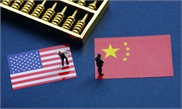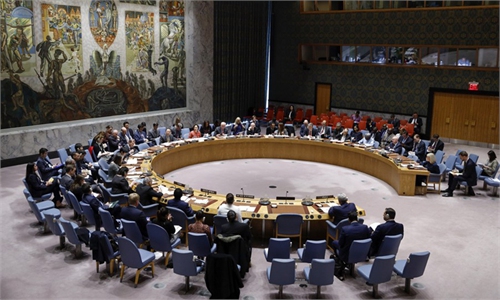COMMENTS / EXPERT ASSESSMENT
US attempt to use ‘small digital circle containment’ set to fail

Illustration: Tang Tengfei/GT
Amid the US' paranoid efforts focusing on suppressing the development of China, the White House is reportedly planning to propose a digital trade deal and gather Indo-Pacific economies under its rules, as one latest measure to counter China in the region.Details of the potential agreement are still being drafted, but the pact could potentially include countries such as Canada, Chile, Japan, Malaysia, Australia, New Zealand and Singapore. It could set out standards for the digital economy, including rules on the use of data, trade facilitation and electronic customs arrangements, Bloomberg reported, citing anonymous sources.
Instead of a move benefiting global trade or multilateralism, the US is fixated on grouping together small circles and portraying China as a "common enemy" in the digital economic sector to lure other countries into a group building on its own rules.
By being in a position to set the rules, the US, as a frontrunner in digital technology and economy could help guarantee the excess earnings of American digital giants and maintain its hegemonic status.
However, most of the mentioned Indo-Pacific countries have lagged behind the US in the development of digital economy with few enterprises demanding beneficial rules as the US-based multinationals do. It is hard for the US to reach a deal with the EU, and it won't be easy for it to conclude an agreement with Asian-Pacific countries.
Even with the nations sitting around the table, the negotiation over specific items will be extremely difficult and time-consuming. A digital trade deal with US writing rules would be unfair to other involved countries which have less-developed digital technology, and it won't benefit the advancement of the international digital trading either.
The World Trade Organization (WTO) has been promoting reforms and pushing forward initiatives on multilateral digital trade rules. Efforts to boost multilateral trading should be included in the WTO framework, rather than taking it as a disguise to heat up geopolitical games.
Moreover, it is simply naive to believe that such a deal could squeeze China out of global digital trade. China remains the largest trading partner for Japan, Malaysia, Australia and others. The reported Indo-Pacific digital trading deal, if can be implemented, will only have biding effects among its signatory members; and will not affect other Indo-Pacific nations' trade relations with their largest trading partner - China.
As one of the leading players, China has been developing rapidly across the digital economy. Data from China's Ministry of Commerce (MOFCOM) showed the volume of China's digital trade surged 6.7 percent to $203.6 billion in 2019, accounting for 26 percent of the country's total service trade volume.
The country has ranked first in the globe in terms of cross-border e-commerce retail export value, according to a recent report issued by the Chinese Academy of International Trade and Economic Cooperation under MOFCOM.
Japan, Australia, New Zealand, Malaysia and Singapore are all RCEP members. In 2020, China's trade volume with 14 RCEP partners was 2.1 times as large as their trade with the US. RCEP agreement also contains digital trade rule-making orientation, supporting WTO efforts in this regard. The US-led small circle will have little implications on China.
The article was compiled based on an interview with He Weiwen, an executive council member of the China Society for World Trade Organization Studies. bizopinion@globaltimes.com.cn



